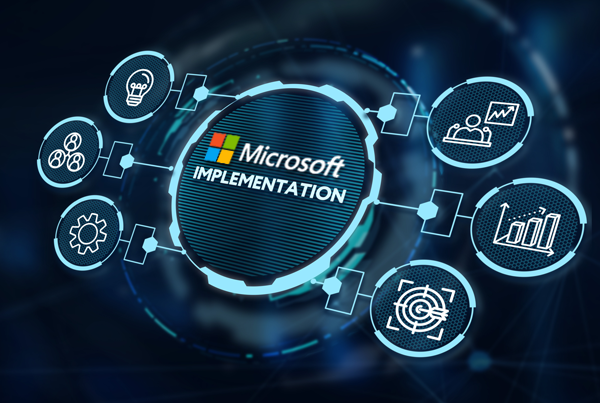ARTICLE | 5 MIN READ
An Overview of Sage Intacct Project Accounting
Learn how Sage Intacct can handle project costing, billing, and budgeting.

Suppose your company doesn’t have a streamlined process for recording and tracking contracts, invoices, billable time, costs, revenues, and other critical project-specific details. In that case, you may be missing out on data that could help you manage your projects more productively and profitably. The solution? Sage Intacct.
The Benefits of Implementing Sage Intacct Project Accounting
Sage Intacct’s project accounting capabilities allow you to accurately track and manage a project’s time, resources, revenue, and costs. This software automates project accounting processes and provides financial insights that help you keep projects on task and within budget.
Project-specific dashboards and reports offer up-to-the-minute financial, operational, and managerial information so that stakeholders always know the status of projects’ completion and profitability.
By giving you the data you need to make smarter bids, and by streamlining your project management and billing processes, Sage Intacct’s project accounting functionality can help you improve your company’s profit margins. Plus, your team will have an easy way to get the information they need to respond quickly to clients’ inquiries and provide exceptional customer service.
Watch a 3-Minute Project Accounting Demo to Learn More about Sage Intacct’s Capabilities
See Sage Intacct’s Project Accounting software in action. This 3-minute demo helps you learn more about the software’s capabilities as we walk you through basic project management tasks.
Sage Intacct’s Project Accounting Capabilities and Features
Sage Intacct’s Project Billing module has everything you need to track project costs and revenue; manage tasks, budgets, resources, and time; and invoice clients. Its features cover three categories: project tracking, project costing, and project billing.
Project Tracking Features
Sage Intacct allows you to set up projects in the software and tag and track associated transactions. Also, you can link hours worked and expenses to projects to get an accurate picture of profitability by project.
By combining Sage Intacct’s Time and Expense module with its project accounting capabilities, you can design multiple levels of approval for project-related expenses, such as approval of expenses by dollar amount. Plus, automated emails to supervisors speed up the reimbursement process.
You can also handle expenses and reimbursements in multiple currencies, drill down to see entry details, and export information in various formats.
Project Costing Features
Sage Intacct allows you to break down projects into tasks, set budgets for tasks, and then assign resources and charge time to those tasks. You can see all project-related costs in real time, giving you more control over managing the financial outcomes of your projects.
Sage Intacct supports varied labor costing, which means you can include hourly and salaried employee information, specify regular and overtime rates, and accommodate rates for contractors.
Project Billing Features
Sage Intacct’s project accounting functionality integrates with the software’s billing and revenue recognition capabilities, so you can track task and project costs and bill them out to clients.
Sage Intacct automatically captures billable and non-billable data, so you don’t miss sending invoices for billable work and expenses. The software also supports automated billing to ensure invoices are sent on time according to milestones, schedule, percent completion, or project completion.
You can generate consolidated invoices or multiple invoices per customer or project with customizable invoice templates.
Flexible billing rates enable you to set up multiple rates and price lists by project, employee, type of work, or customer. You can also set up automatic percentage markups on billable transactions to ensure profitability.
Other Project Accounting Options
Sage Intacct’s Project Billing module is ideal for professional service providers whose income predominantly comes from billing for their time spent on projects. If you have less complex needs, you can use the software’s Project Tracking or Project Costing components on their own.
If your business needs to manage staff resources related to your projects, you can add Sage Intacct’s Project Resource Management tools to the Project Billing module. By combining Project Billing with Project Resource Management, you can see which resources in your organization are qualified for projects and available for use. It also allows you to track your talent according to titles, skills, or other criteria to identify the right resources for a job quickly. Then, you can assign resources to a project or tasks in the software.
Project Resource Management helps you view a complete picture of project schedules and details. Automation features help track project progress, notifying you and your team about pending actions, deadlines, and task completion. Not only can you create cost estimates for resources, but you can also use placeholder resources for tasks and project elements that still need finalization.
Mid-size and enterprise-level companies across various industries can greatly benefit from combining Project Billing with Project Resource Management. Specifically, businesses in engineering, software development, hospitality, health care, construction, and real estate development—and any organization with large or complex projects—make ideal candidates for Project Resource Management.

Let’s Chat
Still have questions? Get in touch with our expert team of software professionals.


